Echinodorus schlueteri
Scientific name: Echinodorus schlueteri
Family: Alismataceae
Maximum size reached under cultivation: 15 - 25 cm (5.91 - 9.84 inch)
014
Recommended pH range: 6.1 - 8
Recommended water hardness: 4 - 18°dGH (71.43 - 321.43ppm)
0°C 32°F30°C 86°F
Recommended temperature range: 21 - 27 °C (69.8 - 80.6°F)
Preferred propagation method: Runners
Native to: South America
Growth rate: Normal
Recommended substrate: Fine gravel
Lighting requirements: Bright
Ideal placement in tank: Midground
Common Names
Green Leopard, Schlueter's Sword
Origin
Echinodorus schlueteri originates from South America, particularly in tropical regions where it thrives along the edges of rivers, marshes, and other freshwater habitats. It is well-suited to the warm, humid climates of its native range, making it an excellent choice for tropical aquariums and humid paludariums.
Quick Overview
- Ideal For: Aquariums, paludariums
- Difficulty Level: Easy
- Lighting: Bright
Growing Conditions
Echinodorus schlueteri can be grown both fully submerged in aquariums and emersed in high-humidity environments like paludariums. It grows at a moderate rate and reaches an ideal height of 15 - 25 cm (5.91 - 9.84 inches), making it a suitable plant for the midground area of an aquarium. This species prefers bright lighting to maintain healthy growth and vibrant leaf coloration, as well as a nutrient-rich substrate like fine gravel to support its roots.
This plant benefits from stable water parameters and is adaptable to a wide range of water hardness levels (4 - 18 dGH) and pH values (6.1 - 8). While Echinodorus schlueteri can grow without added CO2, providing CO2 enrichment in high-light setups will improve growth and overall health.
Planting Area
Due to its manageable size, Echinodorus schlueteri is ideal for midground placement in aquariums. It provides a lush, green backdrop for other plants and creates a natural habitat for fish. In larger tanks, it can also be used in the foreground to add structure and depth to the aquascape.
Propagation
Echinodorus schlueteri reproduces primarily through adventitious plantlets, which form on long flower stalks. When grown in ideal conditions, the plant will produce a stalk with small plantlets that can be separated once they have developed roots. These plantlets can be replanted in the substrate to grow into mature plants. In some cases, it may also produce runners, though this is less common. Regular trimming and propagation help manage its spread and maintain a tidy appearance.
Difficulty
Echinodorus schlueteri is easy to care for and suitable for beginner aquarists. It tolerates a range of water conditions and adapts well to various aquarium setups, as long as it receives sufficient light and nutrients. Regular monitoring for leaf yellowing, a sign of possible iron deficiency, can help keep the plant in optimal condition.
Short Description
Echinodorus schlueteri, commonly known as Green Leopard or Schlueter's Sword, is a hardy aquatic plant characterized by its vibrant green leaves, which may display dark spots on new growth. These spots gradually fade as the leaves mature, adding a unique pattern to the plant. It thrives in bright light and benefits from a nutrient-rich substrate. While CO2 is not required, its addition can enhance the plant's health and growth rate. This plant makes an excellent choice for the midground of aquariums, offering a natural habitat for fish and a lush, tropical appearance to any tank or paludarium.

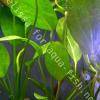 Echinodorus “Ozelot”
Echinodorus “Ozelot” Echinodorus “Red Flame”
Echinodorus “Red Flame” Echinodorus “Red Special”
Echinodorus “Red Special”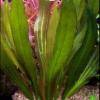 Echinodorus “Rubin”
Echinodorus “Rubin”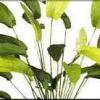 Echinodorus “Tricolour”
Echinodorus “Tricolour”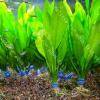 Echinodorus amazonicus
Echinodorus amazonicus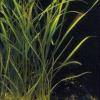 Echinodorus angustifolius
Echinodorus angustifolius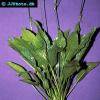 Echinodorus bleheri
Echinodorus bleheri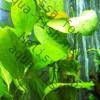 Echinodorus cordifolius
Echinodorus cordifolius Echinodorus grandiflorus
Echinodorus grandiflorus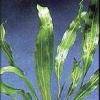 Echinodorus horemanii
Echinodorus horemanii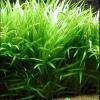 Echinodorus latifolius
Echinodorus latifolius Echinodorus macrophyllus
Echinodorus macrophyllus Echinodorus major
Echinodorus major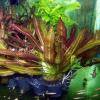 Echinodorus osiris
Echinodorus osiris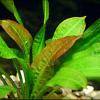 Echinodorus parviflorus
Echinodorus parviflorus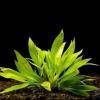 Echinodorus quadricostatus
Echinodorus quadricostatus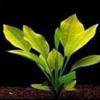 Echinodorus subalatus
Echinodorus subalatus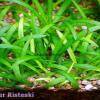 Echinodorus tenellus
Echinodorus tenellus Echinodorus uruguayensis
Echinodorus uruguayensis Sagittaria graminea
Sagittaria graminea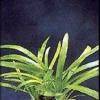 Sagittaria platyphylla
Sagittaria platyphylla Sagittaria subulata
Sagittaria subulata